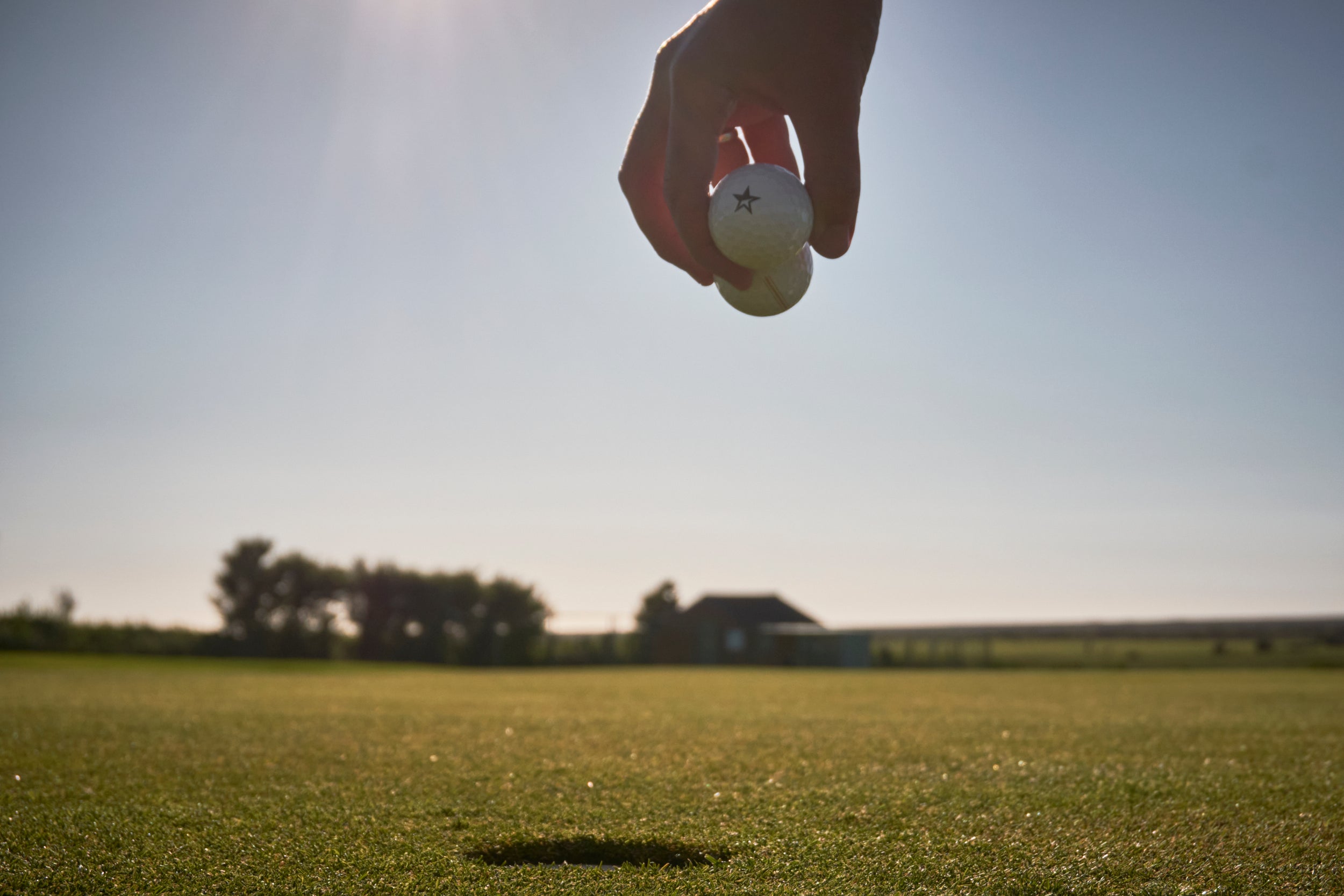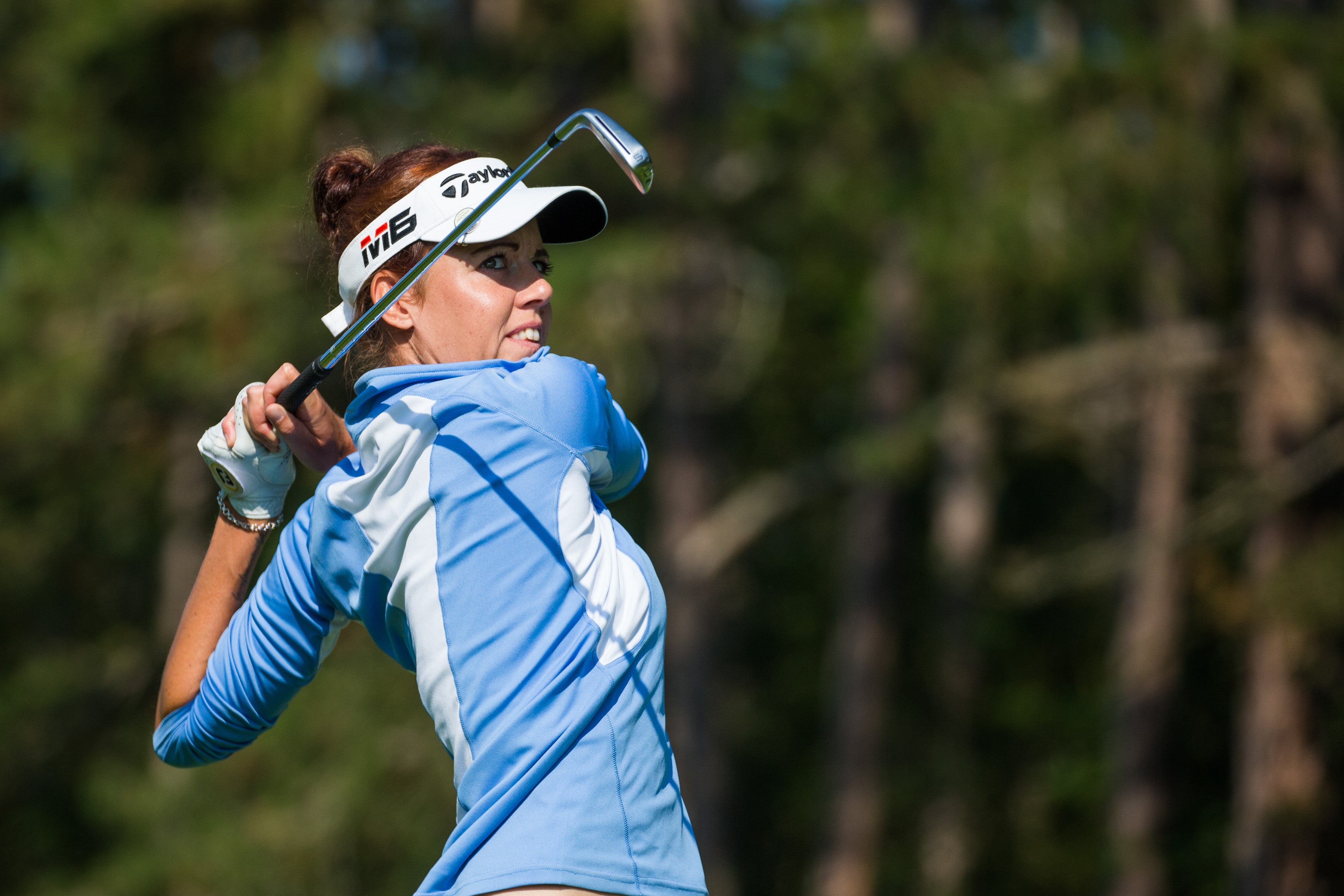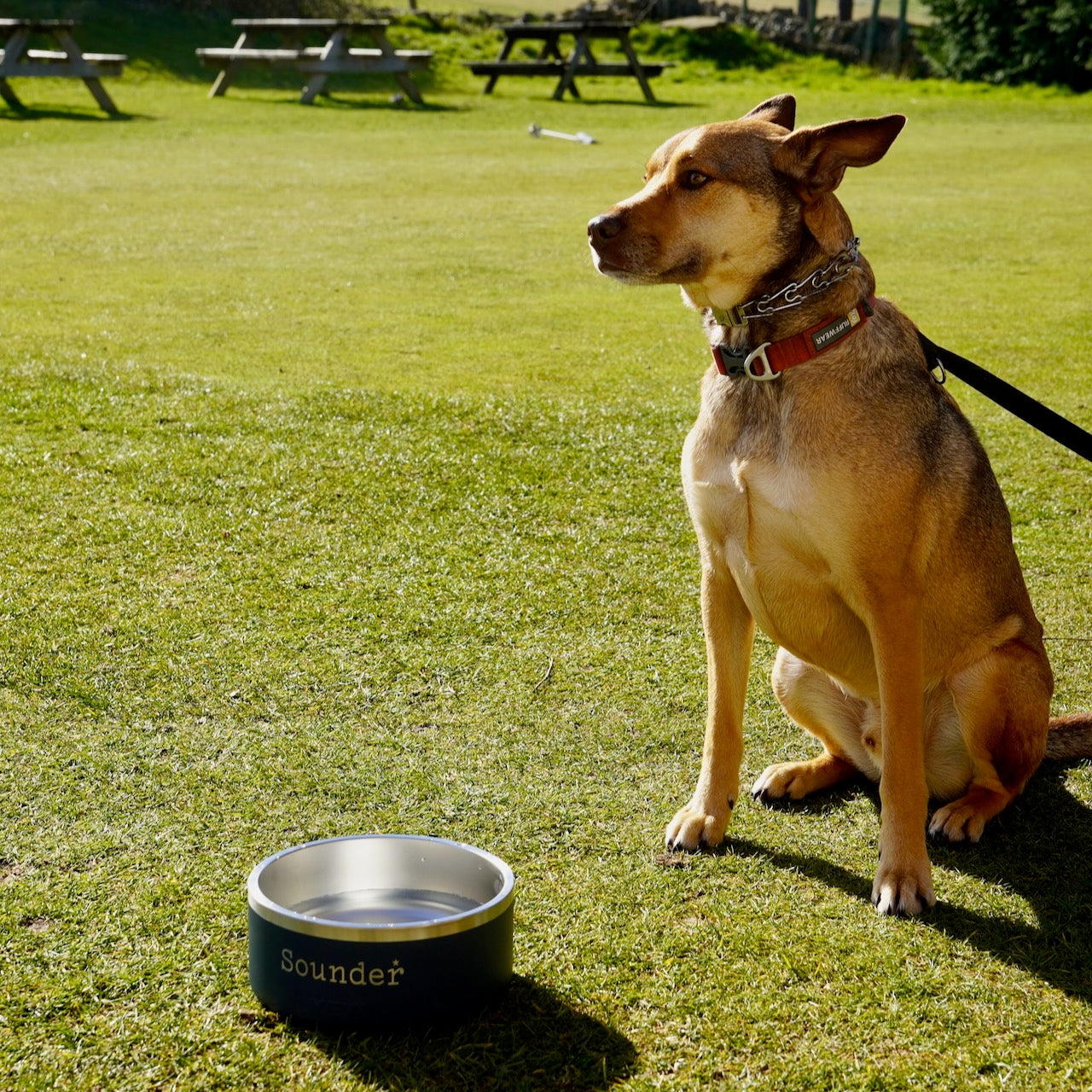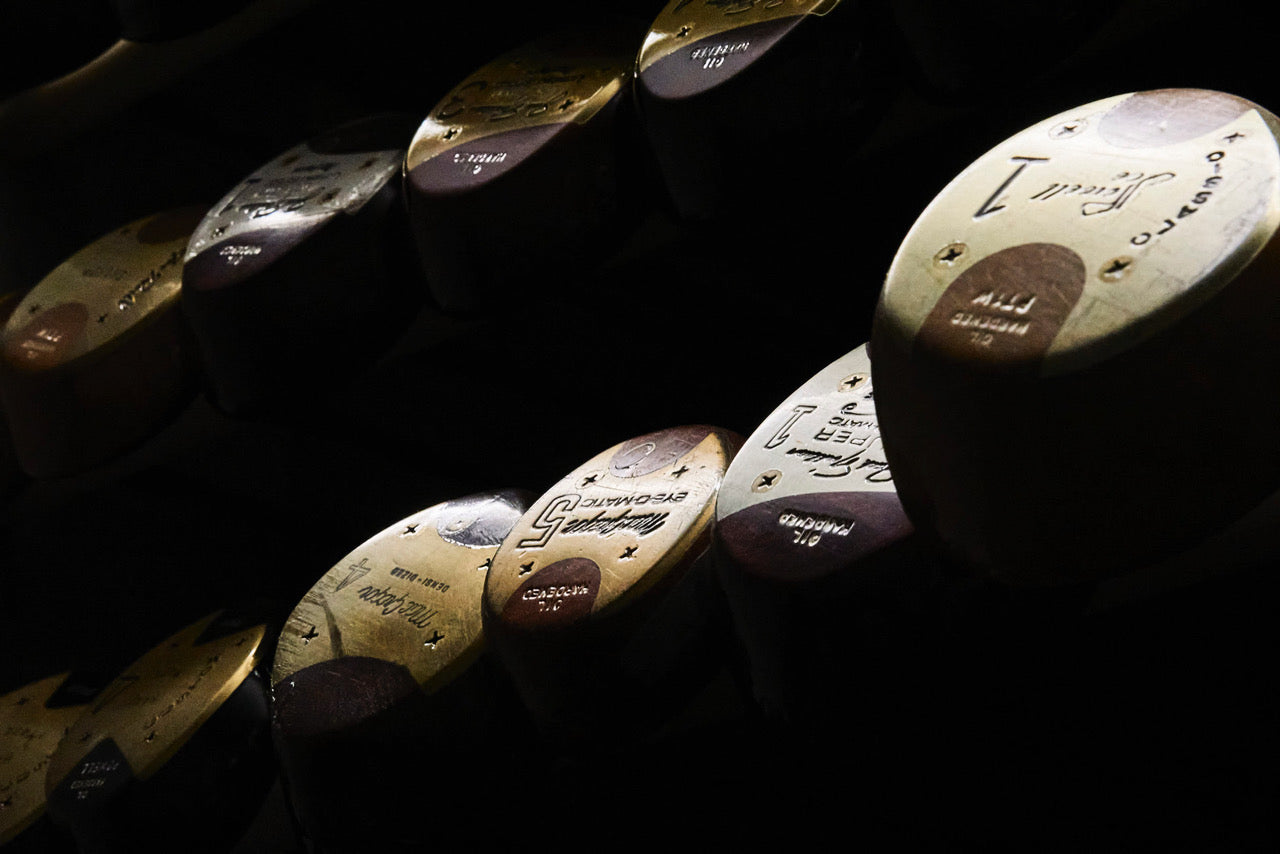There was once a time when metal and wood mixed frequently in golf bags. As late as the early 1990s, metal hadn’t quite advanced to a state of technological supremacy, and persimmon hadn’t yet been deemed obsolete. It was commonplace to see both in the same bag, with many PGA Tour pros still playing persimmon. By 1997, however, holdouts like Justin Leonard and Davis Love III abandoned their persimmon drivers and won majors with metal.
Soon afterwards, the ever-quickening titanium arms race escalated still further, with bigger heads, hotter faces, higher MOI and custom-tuned shafts evolving at a dizzying pace. By 2000, solid core golf balls like the Titleist ProV1 dominated the tour and the market. Wound balata was long gone. Golf had changed forever.
The thing is, I didn’t change with it. In the late 1990s, instead of trading up my simple steel head wood for a bigger and better titanium design, I went backwards and started playing persimmon again. I scoured eBay, which was very new at the time, for old persimmon woods. They were easy to find. In fact, new-old-stock (NOS) Cleveland Classics persimmons, made in the 1980s and early 1990s and modelled after the best MacGregor designs of the 1950s and 1960s, were abundant — and very cheap. Nobody wanted them. Pro shops everywhere were clearing out unsold clubs from their back storage rooms to make way for inventories of Great Big Berthas. I was in heaven.
I started buying classic clubs and putting them in play, trying to find the ones I hit best. Pretty soon I had a nice little arsenal. I did try titanium drivers, of course; I had several in fact. Some I hit pretty well, but I never loved any of them. After a few months, or at most a season, I’d go back to persimmon. Something about persimmon just brings me joy.
If you played persimmon after 1997 you were regarded as weird, a contrarian, a curmudgeon. I got a lot of funny looks on the golf course. A few guys told me I was an idiot. My boss at the time (an unbelievably good putter, by the way) called me ‘a throwback’.
Throwback was kind of right. I took up golf as a kid after watching the 1985 US Open on TV. The drama of T.C. Chen’s double-hit enthralled me. It was like being hit by lightning. I commandeered my dad’s unused clubs, a set of Wilson Sam Snead Blue Ridges, from our basement. My father didn’t ever really play, but fortunately my grandfather did, and so did my high school best friend. It was with their help that I was able to take up the game very quickly.
I played a little high school golf, but I wasn’t very competitive. For me, the golf team was a chance to play every day after school with my buddies. It was my favourite sport but also a social thing. If you were under the age of 18, $190 got you a season pass — all you can play — on the local course, a compact layout that hosted our high school matches.
For practice, me and my buddies on the team played nine holes every day after school. We competed with each other in chipping and putting contests. We bought root beers and Mountain Dews from a vending machine near the 5th green, and hot dogs in the clubhouse after each round.
The pro shop sold used balls for a dollar out of a glass fishbowl on the counter. Usually, these were hard cover distance balls, but sometimes you could find a real balata ball in among the others. I only bagged eleven clubs. Lob wedges and gap wedges didn’t really exist yet, and I dropped my 3-iron and 3-wood for the simple reason I couldn’t hit them well enough. We always walked and carried our own bags. Stand bags were kind of a new thing, a curiosity, but our golf coach looked down on them. On one occasion a kid showed up to practice with one and we shunned him.
Distance didn’t mean much to me back then. As a teen, I hit my 8-iron about 135 yards. I don’t think I could tell you how far I hit my driver... 220 perhaps? The truth is, I never thought twice about it. The course we played was short and tight. Hitting it long didn’t matter nearly as much as hitting it well. On one par-5, which was particularly straight and narrow, the right play was an 8-iron off the tee, a 5-iron for the second shot and another 5-iron for the approach to the green. Those fairways we played made the US Open’s look as wide as the Grand Canyon.
All I thought about in those days was hitting fun shots and hitting it flush. I was intoxicated by the amazing feel and sound that came only when you flushed it.
One of the luxuries of youth, of course, is time. There were summer days when my mom would drop me and a friend off at the course on her way to work and pick us up on the way home. Being a weekday, we had the place to ourselves, and would spend hours trying to hit every kind of shot we could imagine. I wanted to be able to move the ball like Seve, who had become my hero, and wished I could swing with the grace of Bobby Jones, whose old instruction videos I found on VHS and watched until the tape wore out. I was having fun with my buddies playing golf. We were playing a game.
"I’ve spent most of my adult golfing life hoping to recapture the purity of the game from those days as a kid"
As I got older, I discovered and devoured the great literature of golf, reading everything I could find on golf history and course architecture. Heavily influenced by Geoff Shackelford’s books, and soon after by the writing of Golden Age course architects like Alister MacKenzie, George Thomas and Robert Hunter, I refined a decidedly old school sense of the game.
Golf has gotten bigger. Too big, in my opinion. It takes too long to play, courses are too long to enjoy, equipment is too expensive and too, well, scientific. Tour golf has moved in a direction that feels totally unfamiliar to most golfers; attempts to emulate tour golf always led me to frustration and then apathy.
I’ve spent most of my adult golfing life trying to recapture the purity of the game from those days as a kid when I was playing low stakes high school golf. Many average golfers today seem to be having the same feelings about the game. I was a bit ahead of the curve, I’d say, in deliberately lagging behind it, but what has been a revelation is how many like-minded players there are, many of whom are much younger than I am, who yearn for a different kind of game — a throwback game — played with fewer and simpler clubs. A game that’s focussed on fun.
Persimmon woods — the ultimate symbols of old school golf — are enjoying a bit of a moment. Golfers are rediscovering the magical feel and sound that only comes from persimmon and connecting it with a ‘smaller game’ mentality that’s based on a purer experience.
There are other factors, I believe. We live in a world of mass-manufacturing, and more people are gravitating toward handmade objects in order to regain a sense of the human touch. Persimmon woods fit that bill perfectly. Each wood is unique and beautiful and absolutely handmade. Building persimmon woods is a true craft, and a labour of love.
Golfers have always admired great classic woods and irons, and now they want to play them again. Fortunately, eBay still abounds with plenty of great examples of persimmon, including occasional NOS woods from the tail end of the persimmon era. Prices aren’t too steep, and if you browse the listings for long enough, you'll develop a sense of what’s a good price and what isn't.
There are a handful of small but dedicated companies that are still making new persimmon woods. The quality and customisation on offer are truly amazing. If you can’t find the perfect MacGregor model you’ve dreamed of, companies like Louisville Golf and National Custom Works (partnering with Tad Moore) will make you one, with your preferred face angle, loft, insert style and finish stain. That magic club is out there, and they will build it.
Other interesting developments include the rise in creative restorations of classic irons sets, and the growing desire to play with ‘short sets’ of less than fourteen clubs (think ten or less). What this tells me is there is again a desire to embrace feel and shot-making creativity and pure fun. More golfers are moving away from the unfulfilling tedium of playing to numbers and the mantra that distance trumps all.
If old school golf has an essence, it’s probably this: that less is more. Keep subtracting until all that’s left is what’s fun. I feel fortunate to have enjoyed such a simple and innocent formative experience of the game. Golf has changed a lot in the intervening years, just as it has been changing for hundreds of years. But, at its elemental core, it will always be a joyous endeavour. All the true golfers I know have one thing in common: they never lose the carefree wonderment of youth, awestruck by a small white ball in flight toward a distant flag.
Follow John Crabtree’s excellent @OldSchoolGolf account on Instagram
Read more

YouTube isn’t just home to half-baked swing tips and self-styled ‘influencers’ – it’s also a treasure trove of swing footage from some of the world’s greats. Sounder founding partner James Day pick...

Meghan MacLaren is a professional golfer, and also one of the most original and insightful writers on the game. She was a prolific winner of collegiate events while studying at Florida Internationa...




